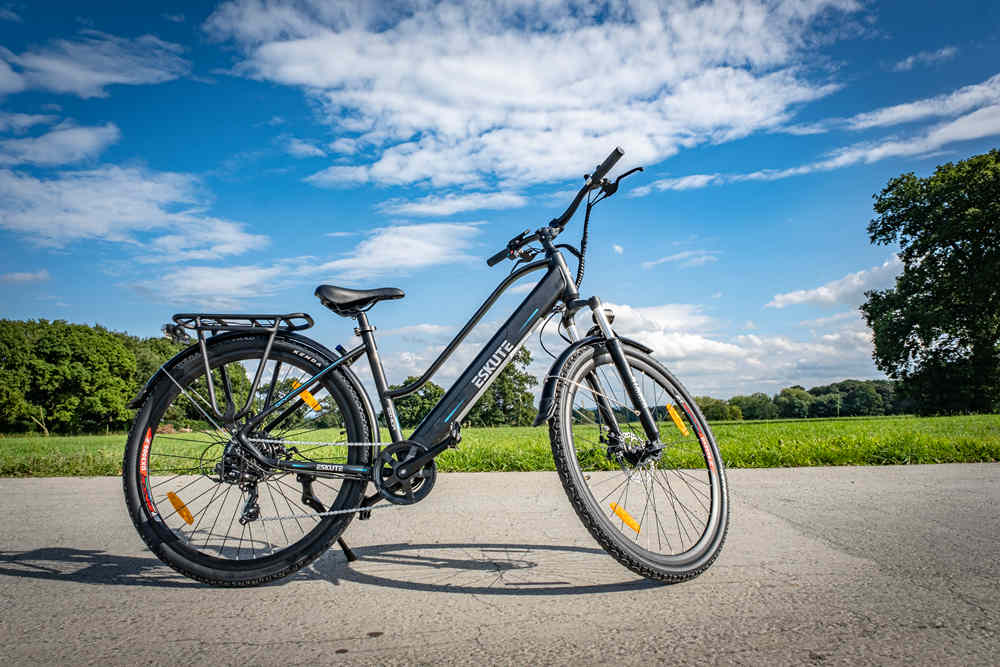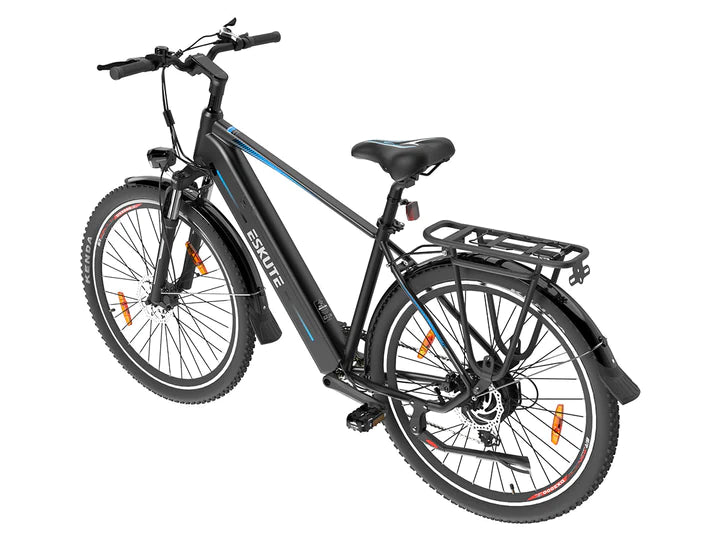E-bikes have taken the streets and trails by storm, revolutionizing the way we commute and explore. With their versatility, riders now have the choice to pedal for longer distances or rely on the assistance of an electric motor. While pedal assistance is well-known, let's dive into the world of electric bike throttles and discover their unique benefits.
Embracing Effortless Riding
An electric bike throttle operates similarly to those found on electric scooters or motorcycles. Positioned on the handlebars, a simple twist of the throttle propels the bike forward without the need for pedaling. This feature is particularly handy when starting on an incline, allowing riders to effortlessly conquer hills and enjoy a smooth ride.
Unleashing Speed without Pedaling
When engaging the throttle on an e-bike, the motor kicks in, providing power without the requirement to pedal. This capability proves invaluable in scenarios such as pulling away from traffic lights, granting riders the ability to accelerate smoothly and effortlessly with a simple twist of the throttle. While pedaling is not mandatory when using the throttle, the pedals must be functional and well-maintained. Some e-bikes even combine pedal assistance with a throttle for added flexibility.

Exploring the Speed Spectrum
Electric bike throttles have the potential to propel you to speeds legally permitted on public roads without pedaling. Depending on the model, the throttle can enable speeds of up to 28 miles per hour, although most e-bikes typically top out at around ten mph when relying solely on the throttle.
Throttles: A Varied Landscape
Throttles for electric bikes come in different forms, each offering a unique riding experience. Let's explore some popular types:
Half-Twist Throttles
These innovative throttles occupy only half the space typically reserved for handlebar grips. Designed to reduce fatigue during extended rides, they provide control through a twist of the wrist, utilizing the thumb and first two fingers. This design also minimizes the risk of accidental operation, ensuring a safe and enjoyable ride.
Thumb Throttles
Thumb throttles offer a compact and unobtrusive design. Positioned on the handlebar, they operate by pressing the thumb. With pressure control, the rider can easily adjust the spring loading of the lever. While these throttles pose minimal risk of accidental operation, it's important to consider thumb fatigue during extended rides.
Trigger Throttles
Taking inspiration from thumb throttles, trigger throttles provide an enhanced experience. Positioned on the handlebars, they are squeezed toward the rider using the fingers rather than the thumbs. This design offers precise control and a comfortable grip, allowing riders to effortlessly modulate their speed.

Choosing Your Throttle Experience
Throttles offer a range of advantages based on personal preferences and specific riding scenarios. Whether you desire a break from pedaling or need assistance on steep inclines, throttles provide the flexibility to tailor your riding experience. However, prolonged use of the throttle may affect battery life, so it's important to consider the impact on the charge cycle.
Adding a Throttle to Your E-Bike
In theory, it is possible to add a throttle to an e-bike equipped with a working controller and a hub-mounted motor. However, the process may be complex, especially for mid-drive motors that rely on pedaling to activate. Considerations such as available handlebar space, additional wiring, motor suitability for standing starts, and the impact on warranty must be carefully evaluated before installing a throttle.
Navigating the Legal Landscape
Electric bike throttle laws vary from country to country, necessitating a thorough understanding of the regulations in your area. Let's explore the legal perspectives in the UK, Certainly! Let's continue exploring the legal perspectives of electric bike throttles in different regions.
Electric Bike Throttle Law UK
In the UK, the use of throttles on e-bikes is generally not permitted unless the bike is classified as a motorbike. This classification requires registration, number plates, tax, compulsory insurance, and mandatory helmet usage for all riders.
- Electrically Assisted Pedal Cycles (EAPCs) in the UK must meet certain criteria, including having functional pedals, a maximum continuous rated power of the electric motor not exceeding 250 Watts, and a speed cut-off at 15.5 miles per hour. These regulations inherently limit the use of throttles, as throttle-powered e-bikes can surpass these limits by at least 33%.
- However, there are exceptions for "Twist and Go" bikes that meet the GB standards for e-bikes. These bikes are allowed to have a throttle, but they can only assist the rider without pedaling up to a maximum speed of 3.7 miles per hour. If the rider pedals simultaneously, the throttle assistance is limited to 15.5 mph. These specific e-bikes are designed to aid riders who may have difficulty starting due to injuries or disabilities, and the manufacturers must be government-approved.
Electric Bike Throttle Law Europe

Electric bike throttle laws in Europe follow a similar pattern. The classification of Electrically Assisted Pedal Cycles (EAPCs) and speed pedelecs plays a crucial role in determining the legal status of throttles. In most European countries, using a throttle on public roads requires adhering to the regulations set for mopeds or motorized vehicles. This entails meeting specific requirements and obtaining the necessary licenses, insurance, and vehicle registrations.
Electric Bike Throttle Law USA
In the United States, the federal definitions of electric bikes are relatively broad. To comply with federal regulations, e-bikes must have operable pedals and a top speed limited to 20 miles per hour when using pedal assistance.
However, regulations pertaining to throttles may vary between states. Many states adopt a three-tier system that classifies e-bikes based on their throttle usage.
- Class, I e-bikes allow the use of a throttle only when the rider is pedaling, while Class II includes throttle-powered bikes that don't require human assistance and are limited to 20 mph.
- Class III e-bikes, similar to speed pedelecs in the UK and Europe, can reach unassisted speeds of up to 28 mph. The legality of Class III e-bikes on public roads depends on state-specific regulations, and some states may even classify Class II e-bikes as motorized vehicles.
- Therefore, it's crucial to research and understand the laws in your particular state before considering the use of a throttle on your e-bike.
How to add a throttle to your Netuno or Polluno?
In conclusion
While electric bike throttles offer a convenient and effortless riding experience, it's important to be aware of the legalities surrounding their use. Always consult local regulations and consider the classification of your e-bike before deciding to incorporate a throttle. By understanding the laws, you can ensure a safe and compliant riding experience while enjoying the freedom and convenience that electric bikes provide.










Leave a comment
This site is protected by hCaptcha and the hCaptcha Privacy Policy and Terms of Service apply.